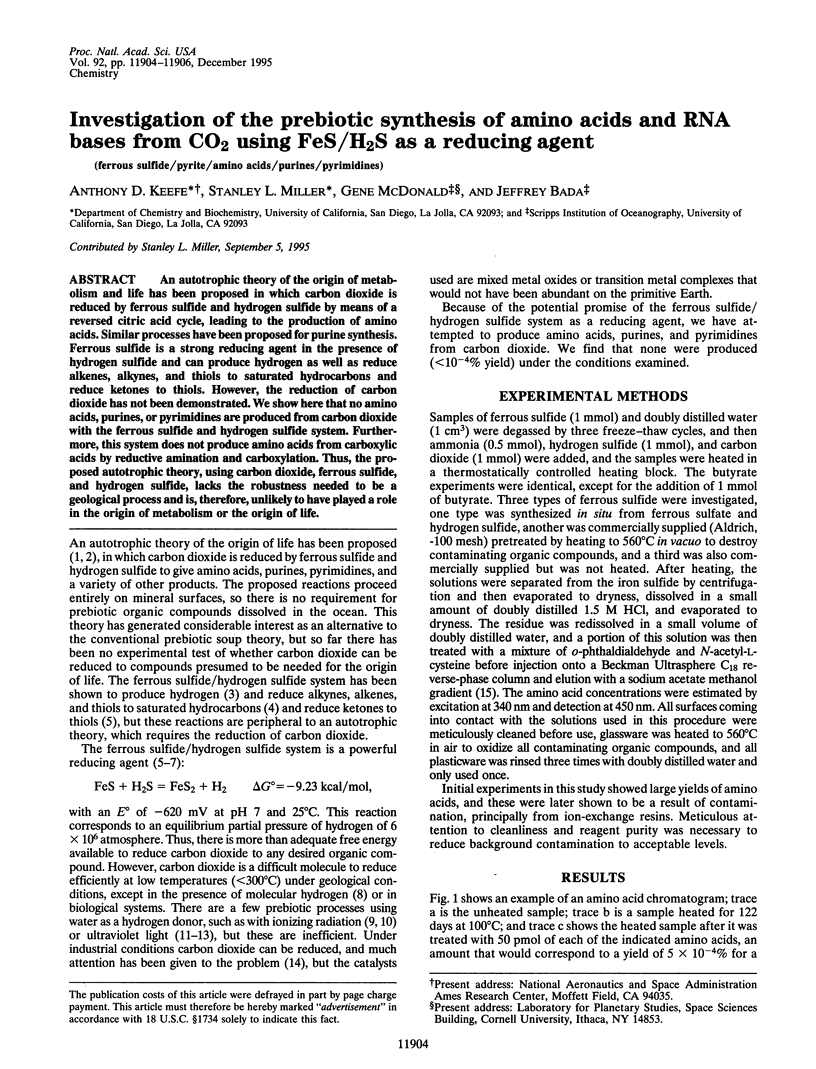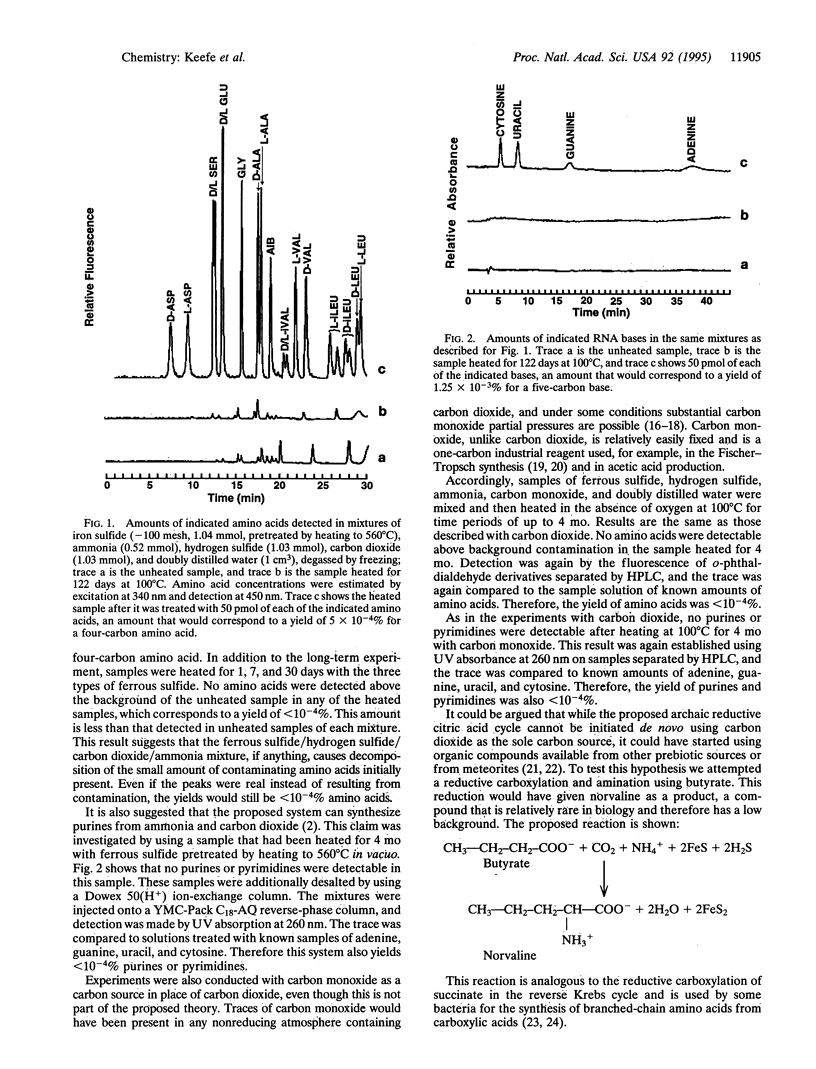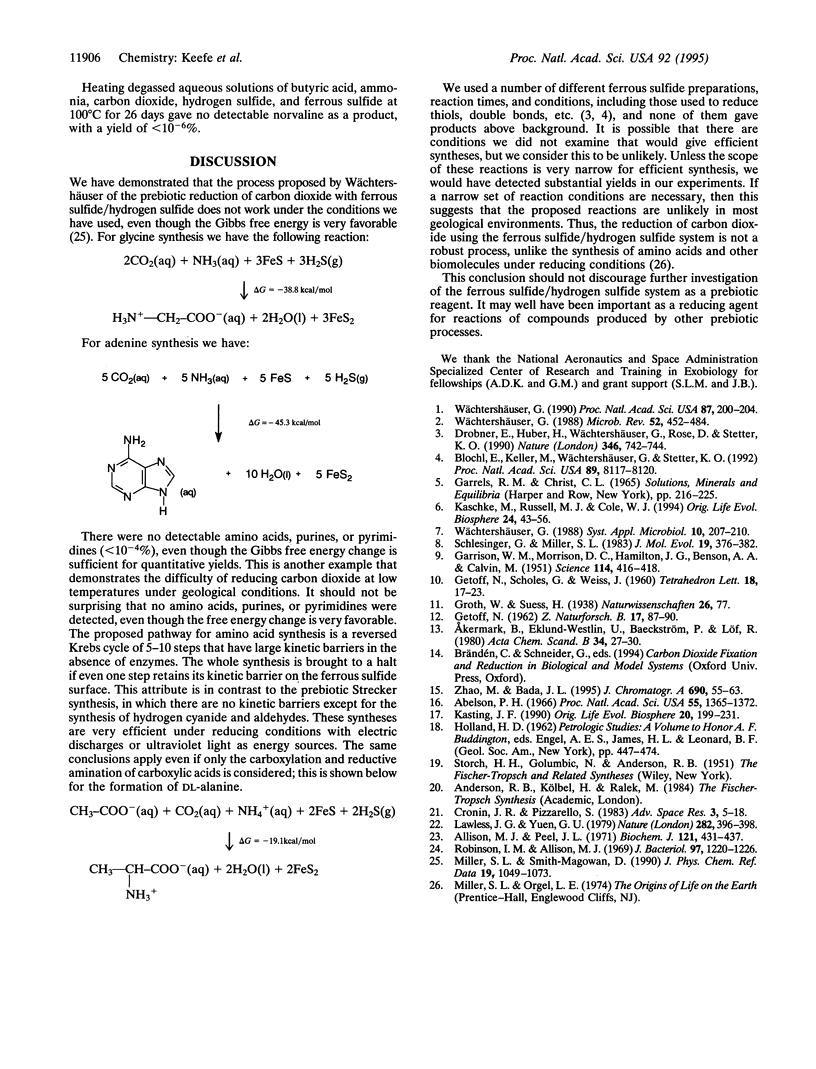Abstract
An autotrophic theory of the origin of metabolism and life has been proposed in which carbon dioxide is reduced by ferrous sulfide and hydrogen sulfide by means of a reversed citric acid cycle, leading to the production of amino acids. Similar processes have been proposed for purine synthesis. Ferrous sulfide is a strong reducing agent in the presence of hydrogen sulfide and can produce hydrogen as well as reduce alkenes, alkynes, and thiols to saturated hydrocarbons and reduce ketones to thiols. However, the reduction of carbon dioxide has not been demonstrated. We show here that no amino acids, purines, or pyrimidines are produced from carbon dioxide with the ferrous sulfide and hydrogen sulfide system. Furthermore, this system does not produce amino acids from carboxylic acids by reductive amination and carboxylation. Thus, the proposed autotrophic theory, using carbon dioxide, ferrous sulfide, and hydrogen sulfide, lacks the robustness needed to be a geological process and is, therefore, unlikely to have played a role in the origin of metabolism or the origin of life.
Full text
PDF


Selected References
These references are in PubMed. This may not be the complete list of references from this article.
- Allison M. J., Peel J. L. The biosynthesis of valine from isobutyrate by peptostreptococcus elsdenii and Bacteroides ruminicola. Biochem J. 1971 Feb;121(3):431–437. doi: 10.1042/bj1210431. [DOI] [PMC free article] [PubMed] [Google Scholar]
- Blöchl E., Keller M., Wachtershäuser G., Stetter K. O. Reactions depending on iron sulfide and linking geochemistry with biochemistry. Proc Natl Acad Sci U S A. 1992 Sep 1;89(17):8117–8120. doi: 10.1073/pnas.89.17.8117. [DOI] [PMC free article] [PubMed] [Google Scholar]
- Cronin J. R., Pizzarello S. Amino acids in meteorites. Adv Space Res. 1983;3(9):5–18. doi: 10.1016/0273-1177(83)90036-4. [DOI] [PubMed] [Google Scholar]
- GARRISON W. M., MORRISON D. C., HAMILTON J. G., BENSON A. A., CALVIN M. Reduction of carbon dioxide in aqueous solutions by ionizing radiation. Science. 1951 Oct 19;114(2964):416–418. doi: 10.1126/science.114.2964.416. [DOI] [PubMed] [Google Scholar]
- Kaschke M., Russell M. J., Cole W. J. [FeS/FeS2], a redox system for the origin of life (some experiments on the pyrite-hypothesis). Orig Life Evol Biosph. 1994 Feb;24(1):43–56. doi: 10.1007/BF01582038. [DOI] [PubMed] [Google Scholar]
- Kasting J. F. Bolide impacts and the oxidation state of carbon in the Earth's early atmosphere. Orig Life Evol Biosph. 1992;20:199–231. doi: 10.1007/BF01808105. [DOI] [PubMed] [Google Scholar]
- Robinson I. M., Allison M. J. Isoleucine biosynthesis from 2-methylbutyric acid by anaerobic bacteria from the rumen. J Bacteriol. 1969 Mar;97(3):1220–1226. doi: 10.1128/jb.97.3.1220-1226.1969. [DOI] [PMC free article] [PubMed] [Google Scholar]
- Wächtershäuser G. Evolution of the first metabolic cycles. Proc Natl Acad Sci U S A. 1990 Jan;87(1):200–204. doi: 10.1073/pnas.87.1.200. [DOI] [PMC free article] [PubMed] [Google Scholar]


